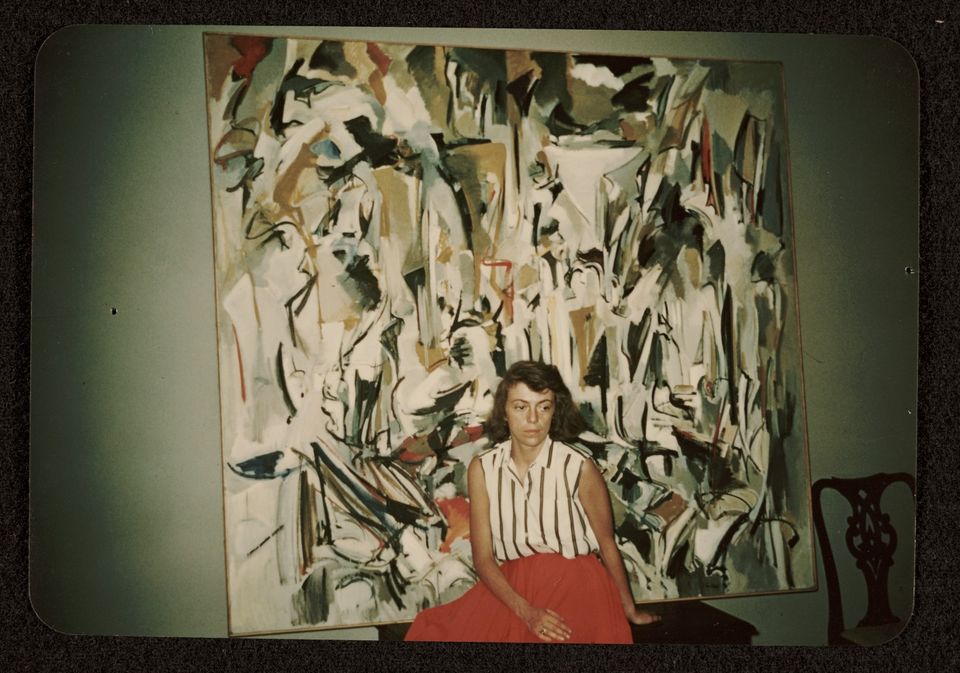Joan Mitchell

Joan Mitchell with her painting 34th St. and 7th Ave. (1951) in her parents' apartment in Chicago, circa 1952. Michael Goldberg papers, 1942-1981. Archives of American Art, Smithsonian Institution
- Born
- Chicago, Illinois, United States
- Died
- Paris, France
- Active in
- New York, New York, United States
- Biography
“I paint from remembered landscapes that I carry with me—and remembered feelings of them. . . . I could certainly never mirror nature. I would like more to paint what it leaves me with.”
–– Joan Mitchell, 1958
Joan Mitchell was an artist who explored abstraction’s capacity to evoke landscapes, memories, poetry, and music in her paintings, pastels, and lithographic prints.
Mitchell’s childhood in Chicago was filled with art, poetry, and culture. She published a poem at age ten, was a champion figure skater, and began painting in second grade through classes at the School of the Arts Institute of Chicago (SAIC), where she developed an interest in nineteenth-century French painting. After receiving her BFA from SAIC in 1947, Mitchell received a travel fellowship and the next year lived in France. During this time, she painted “cubed-up landscapes” that abstracted views from her window and her memories of local sites.
In 1950, Mitchell resided in New York City and worked within the orbit of a group of painters and poets known as the New York School. She exhibited with many of them, including in the pivotal Ninth Street Exhibition of Paintings and Sculpture (1951), which presented artists central to making New York City the hub of gestural abstraction, such as Willem de Kooning and Franz Kline. By 1955, Mitchell divided her time between New York City and Paris; in 1959, she permanently established residence in France. There, her paintings of the 1960s increasingly explored the physical material of paint, embodying feeling through color and the accumulation of bold brushstrokes.
Toward the end of the 1960s, Mitchell began working cyclically: stepping away from and returning to her paintings after short and long periods and, at times, working on multiple canvases at once, even referencing them side by side. The large-scale works that followed generated a multisensory experience of landscapes, enveloping viewers within unfurling tendrils of color, such as in My Landscape II (1967, SAAM) and other monumental multipanel paintings. In 1968, she moved to La Tour, an estate where French impressionist painter Claude Monet previously resided, in Vétheuil, France. Mitchell’s work again drew upon her surroundings, reflecting the life cycles and panoramic views of the lush, wildly beautiful green gardens, such as in Sunflower III (1969, SAAM).
Throughout her life, Mitchell’s social circle as well as her beloved dogs were significant touchstones for her practice. Mammoth paintings in her late career memorialize friends and dogs who passed, draw inspiration from musical compositions, and spring from memories her friends recounted. Until she died in 1992, Mitchell welcomed an array of artists and writers into her home, a generosity that has informed her legacy through the Joan Mitchell Foundation.
Authored by Gabriella Shypula, American Women’s History Initiative Writer and Editor, 2024.















